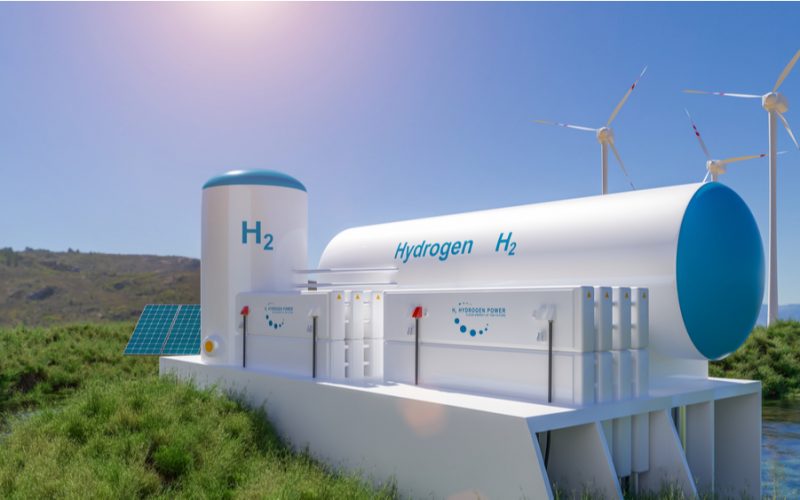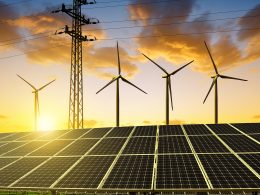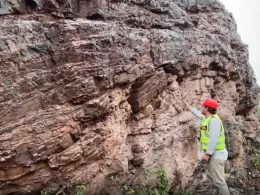The Projects | Clean energy
On Monday Tlou Energy , the Botswana Stock Exchange listed energy development company announced in their quarterly market update that the processes are underway to advance the company’ s hydrogen ambitions.
Tlou’s hydrogen technology partner Synergen Met Pty Ltd (“SM”),a specialist in plasma torch and pyrolysis technology,has informed the Company that during the quarter, preliminary engineering for their hydrogen-carbon production process was completed.
The plasma torch will be tested and configured to optimise hydrogen and solid carbon production. The use of plasma technology for hydrogen production will be a first for the sub‐Saharan region and could be advantageous for the production of low emission, clean energy across the region as well as in the related fields of waste‐to‐energy and waste disposal.
Tlou and SM intend to use the hydrogen produced from the prototype too generate electricity and possibly for transport fuel. Solid carbon will be made available for regional consumers that require the product.
World markets for hydrogen and solid carbon black are predicted to expand considerably over the short and medium term.
SM considers that heir process meets the definition of green hydrogen production via their plasma torch gas pyrolysis design.
Tlou is developing a hydrogen strategy to complement the Company’s gas-to-power project.
The hydrogen economy is rapidly developing and could open multiple additional business opportunities such as solid carbon products, oxygen, ammonia for energy storage, fuel cell electric vehicles (FCEV), agricultural and medical applications.
Tlou is well-positioned to produce hydrogen from different methods. The Company has large and proven resources to develop these products. Methane for carbon and hydrogen, readily available water for hydrogen and oxygen, and virtually unlimited CBM / solar power to drive the process.
A hydrogen strategy would benefit from Tlou’s extensive approvals secured to date, including environmental, gas and solar generation licences, access to land and established in-country operational expertise.
In July last year Tlou announced a binding Heads of Agreement (HOA) with Synergen Met Pty Ltd (Synergen Met), a leading hydrogen developer using plasma technology
The HOA envisages the construction and commissioning of a hydrogen and solid carbon prototype to be installed at the Lesedi Project in Botswana.
Synergen Met utilises unique intellectual property in the form of plasma technology to convert methane to hydrogen and potentially valuable solid carbon via a carbon neutral process.
They have already built a first-generation working prototype developed in conjunction with the University of Queensland that has produced hydrogen and NaCN (Sodium Cyanide) for commercial applications.
Design work has commenced to modify this unit to produce hydrogen and solid carbon using Tlou’s existing gas flows and approvals. The prototype will be constructed and tested in Queensland prior to transport to Tlou’s Lesedi Project in first quarter of 2022.
The post-prototype objective is to grow this segment of Tlou’s clean energy business via a Joint Venture with Synergen Met throughout the Southern African Development Community (SADC) region and potentially beyond, subject to mutual agreement. The HOA also contemplates Tlou’s potential participation in Synergen Met’s proposed initial public offering (IPO), currently scheduled for later this year.
Costs and ownership under the HOA
Third party costs to build the prototype will be shared on a 50:50 basis whereas associated in-house costs will be covered by each party. Tlou will supply the input gas and electricity at no cost to Synergen Met for the prototype. An input gas price will be negotiated on expansion of the project. Tlou will retain ownership of the input gas and Synergen Met will retain ownership of the plasma technology and associated IP. Hydrogen and Carbon products will be owned 50:50.
Tony Gilby, Tlou’s Managing Director, said “The HOA with Synergen Met is a truly exciting development for both companies. It potentially creates another major market for our gas that will complement, and be in addition to, the Lesedi gas to power project. While the gas to power project is steadily progressing, the hydrogen-carbon prototype can be done using Tlou’s gas flow from Lesedi 4P and existing approvals for gas and solar. We look forward to working closely with Synergen Met in a symbiotic relationship to achieve significant upside for both of our shareholder groups.”
Project Process
Tlou’s methane will be fed into the plant to be converted via a plasma torch into hydrogen and solid carbon and producing no greenhouse gas emissions. In addition to methane as an input, electricity is required to power the plasma torch. Tlou intends to supply solar power to the plant which will assist in achieving carbon neutrality.
The hydrogen will be compressed and stored for use as a clean vehicle fuel as well as to produce electricity for the Lesedi gas to power project assisting with carbon neutrality objectives. The solid carbon will be transported by road to a point of sale. Design modifications are intended to be introduced with time to increase the value of the solid carbon products produced.
Background on hydrogen and solid carbon
Hydrogen
Hydrogen has a large corporate, industrial and research presence due to its ability to generate thermal energy (via combustion), electrical energy (via fuel cells) and as a reducing agent for bulk chemical production (e.g., ammonia, polymers, etc) without end-user carbon emissions.
As an energy carrier, hydrogen has the highest energy value per kg and lowest energy value per volume (at atmospheric conditions). It can therefore be easily piped, but to be transported long distance, needs to be compressed (to >200 bar), or liquefied. Conversion to ammonia as a fuel is widely promoted, albeit with challenges.
Solid Carbon
Carbon as carbon black and graphite have well established markets. Carbon black is used as a tyre input (wear resistance and pigment), while graphite is the single largest input to lithium (and many other) batteries.
Battery manufacturing is progressively shifting towards use of synthetic graphite, mainly due to contamination of natural graphite and 95% of battery production now uses synthetic graphite
The carbon black, graphite and hydrogen markets are growing and the potential for value growth in graphite in particular is high due to the increasing need for high purity graphite in battery production.








